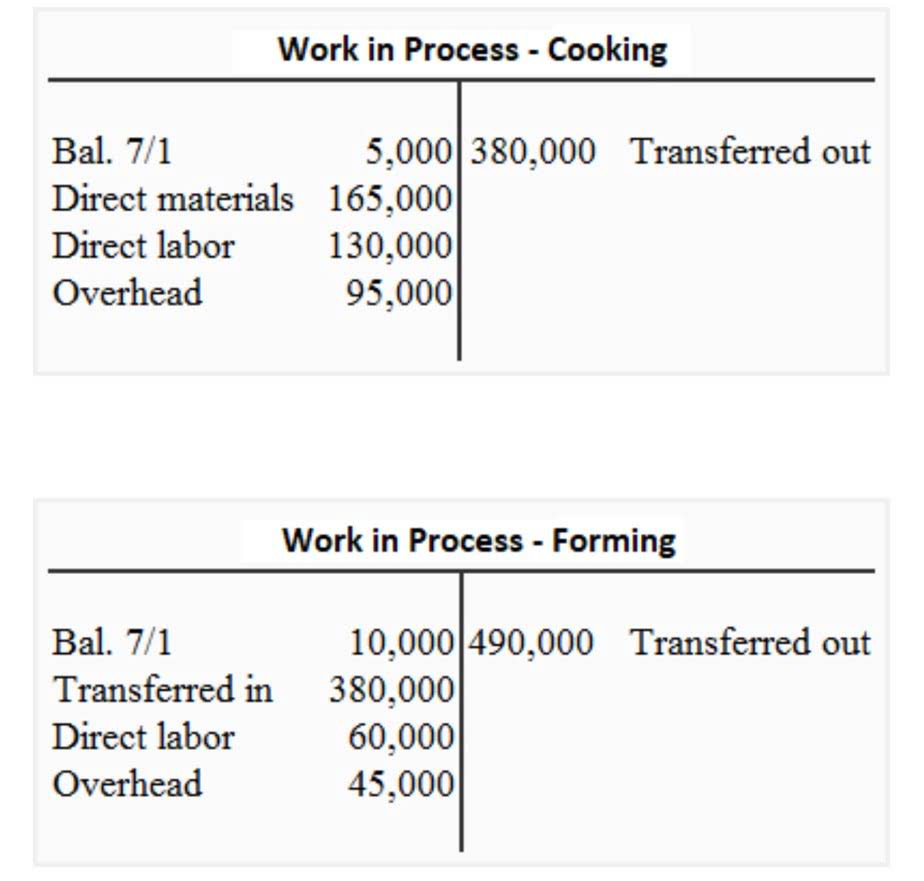Solved The accounting equation may NOT be expressed as *

Another common misconception is that a balanced the accounting equation may not be expressed as equation implies a healthy business. For instance, high liabilities might signify potential solvency issues despite a mathematically balanced equation. Many people mistakenly believe that the accounting equation is only relevant for large corporations with complex financials. In reality, it’s a fundamental principle applicable to all business sizes and types, ensuring basic financial stability and accuracy. This version of the equation helps sole proprietors clearly delineate the health and profitability of their business operations from personal finances. Discrepancies are easy to spot, allowing businesses to quickly correct mistakes, thus maintaining the reliability of their financial data.

Three Ways to Represent the Double Entry Accounting System – Need To Know
For example, if the total assets were reported as $70,000, while liabilities and equity only summed to $60,000, it indicates an imbalance. This misrepresentation could arise from various How to Invoice as a Freelancer factors such as mistakes in data entry, failure to record a transaction accurately, or even fraudulent activities. Such discrepancies must be identified and rectified promptly to maintain financial integrity and promote accurate decision-making. Every business transaction will be represented in at least two of its accounts if a company is keeping accurate accounts. The borrowed money will be reflected in its balance sheet as both an increase in the company’s assets and an increase in its loan liability if a business takes a loan from a bank.
What Is Shareholders’ Equity in the Accounting Equation?

It will show as a liability if it’s financed through debt but in shareholders’ equity if it’s financed through issuing equity shares to investors. On the left-hand-side of the Accounting Basics equation are the resources (assets) of the business. Or more correctly, the term https://inha.s2-tastewp.com/2025/03/06/how-to-prepare-a-statement-of-retained-earnings/ assets “represents” the value of the resources of the business. The equity, or owner’s equity, is the claim of the owners of the business (those “inside” the business).
Assets Definition and Examples
They help analysts dissect the economic effects of transactions, offering insights into liquidity, solvency, and profitability. By employing the accounting equation, businesses can maintain a stable financial environment. Income tax accounting is crucial in this process, as it helps detect discrepancies early, allowing them to address financial missteps before they escalate. The equation highlights a company’s liquidity by comparing assets against liabilities, thus assessing the business’s ability to meet short-term obligations.

It’s vital for businesses to manage current liabilities effectively because they affect liquidity. A high ratio of current liabilities to current assets could signal potential cash flow issues, thereby impacting the financial health and operational stability of the company. Mastering the accounting equation is fundamental to understanding the financial landscape of any business. This foundational principle delineates the relationship between a company’s assets, liabilities, and equity, specifically illustrating that assets equal liabilities plus equity. Grasping this equation not only provides insight into a company’s financial health but also enables accounting professionals and business owners alike to make informed decisions.
Accounting Equation Explained: Formula & More
Assets, liabilities, and equity are the three pillars of the accounting equation, each serving a distinct role. It represents the total profits that have been saved and put aside or “retained” for future use. This number is the sum of total earnings that weren’t paid to shareholders as dividends.
It will result in an increase in the company’s inventory which is an asset while reducing cash capital which is another asset if a business buys raw materials and pays in cash. Two or more accounts are affected by every transaction carried out by a company so the accounting system is referred to as double-entry accounting. The benefits of an accounting equation include the use of a simple formula, simple math that can be explained and understood. The problem with using the accounting equation to record transactions and build the financial statements is that it is not as efficient as the use of debits and credits. Equity comprises various components, primary among them being retained earnings, contributed capital, and additional paid-in capital. Retained earnings represent the cumulative profits that have been reinvested in the business rather than distributed to shareholders as dividends.
- These liabilities are often necessary for funding large capital expenditures, such as property or equipment, thus facilitating growth opportunities for businesses.
- Liabilities represent the company’s obligations or debts that arise during business operations, indicating a future sacrifice of economic benefits.
- They must ensure that funding from donations (equity) is effectively allocated among various programmatic assets while managing operational liabilities.
- The equity, or owner’s equity, is the claim of the owners of the business (those “inside” the business).
- It represents the total profits that have been saved and put aside or “retained” for future use.
- Primarily, it provides a static snapshot of a company’s financial position at a given moment, lacking the capacity to convey trends or anticipate future financial performance.
Balancing revenues and expenses is key to maintaining financial health and profitability. For startups, the incorporation of the accounting equation into their financial practices is crucial for viability and sustainability. In the early stages, entrepreneurs often utilize this equation to examine their financial positions closely. For instance, when a startup invests in inventory (an asset), they may use a loan (liability) to finance this acquisition. Additionally, some individuals may not fully appreciate how equity functions within the equation.

This measure directly reflects the company’s profitability over time and indicates how effectively management has utilized profits to grow the business. These may include loans, accounts payable, mortgages, deferred revenues, bond issues, warranties, and accrued expenses. Expense is the using of assets or incursion of liabilities as part of operations to generate revenue. Expenses are what a business needs to consume to achieve the goal of revenue generation. When thinking about the accounting equation, the equity section includes all temporary accounts, including revenue accounts and expense accounts. Liabilities come about from a transaction that happens in the past which obligates the company for some form of future payment.
- For example, revenue of $100,000 a month is much different than revenue of $100,000 a year.
- The shareholders’ equity number is a company’s total assets minus its total liabilities.
- It provides a snapshot of a company’s current financial position, but lacks forward-looking insights.
- For both accounting professionals seeking to refine their expertise and business owners aiming to bolster their financial acumen, mastery of this equation is indispensable.
- Furthermore, qualitative factors such as management efficiency or employee satisfaction are outside its scope.
Overall, the accounting equation underpins financial transparency, serving as the foundation for thorough and reliable reporting. This format of the accounting equation is not as useful but is another way the accounting equation can be expressed algebraically. Accurate reporting facilitated by the accounting equation is vital for compliance purposes. Businesses can meet regulatory standards and avoid penalties by providing correct reports to tax authorities and auditing firms. The global adherence to the double-entry accounting system makes the account-keeping and -tallying processes more standardized and foolproof.


